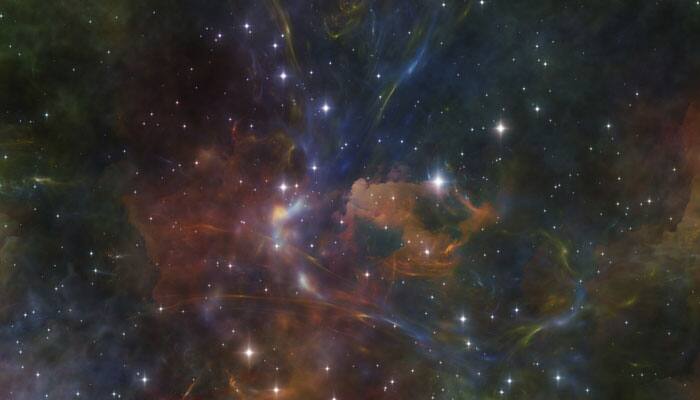Washington: A new study has provided a deeper insight into how dark matter in the cluster of galaxies behaves when the clusters collide, which may ultimately provide the conclusion that its richer and more complex than previously believed.
Using observations fromNASA's Hubble Space Telescope and Chandra X-ray Observatory, astronomers have found that dark matter does not slow down when colliding with itself, meaning it interacts with itself less than previously thought. Researchers stated that this finding narrowed down the options for what this mysterious substance might be.
Dark matter is an invisible matter that makes up most of the mass of the universe. Because dark matter does not reflect, absorb or emit light, it could only be traced indirectly by, such as by measuring how it warps space through gravitational lensing, during which the light from a distant source would be magnified and distorted by the gravity of dark matter.
Specifically, Hubble was used to map the distribution of stars and dark matter after a collision, which was traced through its gravitational lensing effect on background light. Chandra was used to detect the X-ray emission from colliding gas clouds.
Galaxy clusters are made of three main ingredients: galaxies, gas clouds, and dark matter. During collisions, the gas clouds surrounding galaxies crash into each other and slow down or stop. The galaxies are much less affected by the drag from the gas and, because of the huge gaps between the stars within them; do not slow each other down.
The team found that, like the galaxies, the dark matter continued straight through the violent collisions without slowing down much. This means dark matter does not interact with visible particles and flies by other dark matter with much less interaction than previously thought. Had the dark matter dragged against other dark matter, the distribution of galaxies would have shifted.
With this discovery, the team has successfully narrowed down the properties of dark matter. Particle physics theorists now have a smaller set of unknowns to work around when building their models.
Dark matter mighy have rich and complex properties, and there are still several other types of interactions to study. These latest results rule out interactions that create a strong frictional force, causing dark matter to slow down during collisions.
The team also would study other possible interactions, such as dark matter particles bouncing off each other like billiard balls and causing dark matter particles to be ejected from the clouds by collisions or for dark matter blobs to change shape. The team also would be looking to study collisions involving individual galaxies, which are much more common.
The study is published in the journal Science.
















